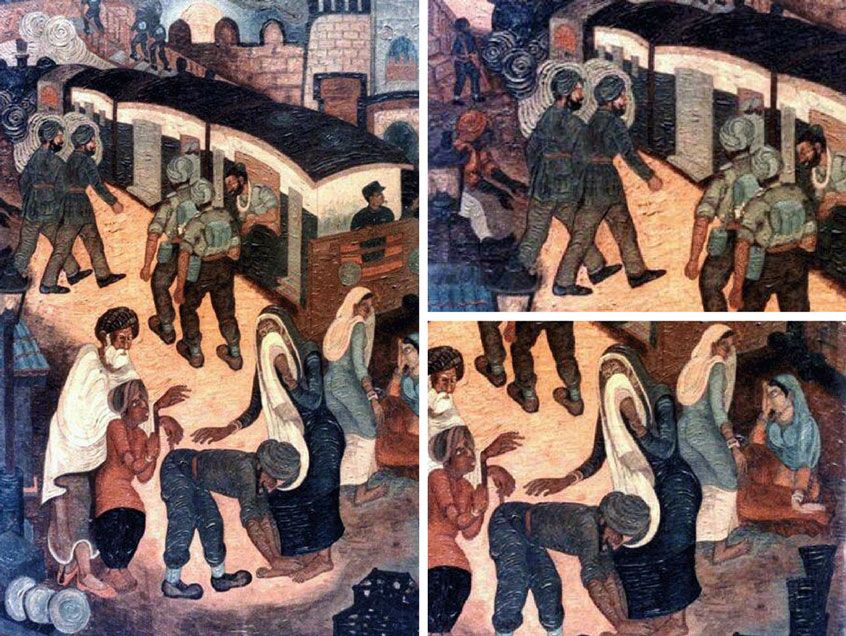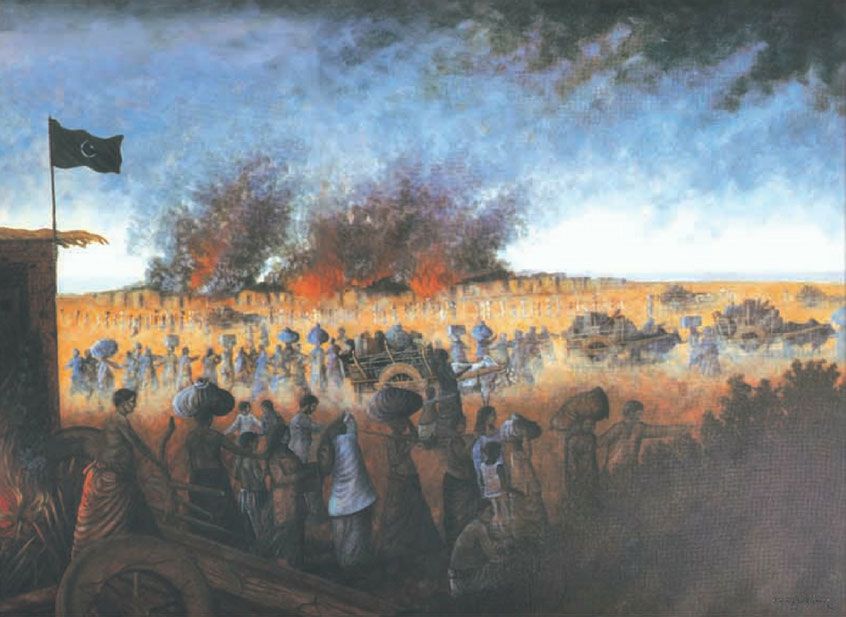By the end of World War II, the position of Britain had changed considerably. The demand for independence could not be ignored in the Indian subcontinent. With Britain’s economy devastated, the country could not bear the cost of ruling over an extended empire in another region.
Thus came about the partition of India, which led to one of the world’s biggest migrations in the world with Muslims moving West into Pakistan and the Sikhs and Hindus moving East trekking into India. This event highlights an unprecedented history as accurate stats are still unable to be obtained.
The misery and hardship faced by the migrants cannot be described. Fear, insecurity and chaos ensued when the partitioning of the Indian subcontinent was announced, leading to people leaving behind their land, possessions and even family members. This was not a peaceful event.
It is appalling to note that with the announcement in 1947, grave riots began in which 2000 people lost their lives whereas tens of thousands were driven into refugee camps just the first night. This began the start of dislocation of social and economic life for many entangled in the movement from one side to another in search of finding their homeland and safety.
The British left the Indigenous people in dismay, without any course of action, hoping to get out of the region facing the economic losses from World War II that aroused detrimental effects to their own economy – thus a retrieval from the continent became a need at the time.
What was worse was the condition of the poor refugees enrolled in organized attacks conducted by armed gangs that ran through Delhi and Lahore, actively ambushing trains that carried evacuees despite military escorts being present. This highlights the hatred between the two religions ensuring the need for the two-nation theory—Pakistan and India. It is important to note that while many millions headed in opposite directions to find their homeland, many hundreds of thousands of people never made it.

Pran Nath Mago was an artist, art historian and critic from Lahore who moved to Delhi, post-partition. The image by the artist Mago highlights the peak of the partition taking place. It evokes feelings of despair and misery as we see how people are moving to migrate either to Pakistan or to India. The women and men, despite knowing the situation at hand, are quite distressed, not wanting to leave. Many had to sacrifice leaving their lands, property and many valuable possessions.
Another significant point to note can be seen in the image above. Despite the agenda of “hate” created between Hindus and Muslims, we see a Hindu and a Sikh man feeling quite troubled by a head-veiled woman leaving. This signifies the narrative created by political parties to divide the nation as much of the hate has been embedded into individuals to attain their political desires. This notion still exists today as politicians and parties evoke hatred in individuals against either religion or race to achieve their personal political goals.
The image provides a visual history of the partitioning of India with military personnel present, however, not supervising the migration nor helping any of the poor people soon to turn into refugees. The British military was clearly not concerned with the safety of the people as violence ensued at the stations, many were killed, women were raped and many were lost.
The visual presentation of the partition evokes thoughts in the reader’s mind as they see how despite the communities of Hindus and Muslims coexisting for a millennium, the independence of the subcontinent led to an outbreak of sectarian violence with Muslims on one side and with Sikhs and Hindus on the other.
A genocide came into being with forced conversions, sexual violence, mass abductions, arson and massacres taking place. A horrifying event in history indeed. Women were dismembered and even disfigured. In the book Midnight’s Furies written by Houghton Mifflin Harcourt, Nisid Hajari writes, “Gangs of killers set whole villages aflame, hacking to death men and children and the aged while carrying off young women to be raped. Some British soldiers and journalists who had witnessed the Nazi death camps claimed Partition’s brutalities were worse: pregnant women had their breasts cut off and babies hacked out of their bellies; infants were found roasted on spits.”
Overall, more than fifteen million people were uprooted while two million lost their lives. The partition comes into par with what the Holocaust is to the Jewish community, still branded in the memories and lives of Pakistanis and Indians now with memories of unimaginable violence. Pakistani historian Ayesha Jalal called the event, “The central historical event in the twentieth century South Asia.” She wrote, “A defining moment that is neither beginning nor end, the partition continues to influence how the peoples and states of postcolonial South Asia envisage their past, present and future.”

Jimmy Engineer is an artist from Pakistan mostly popular for his work depicting the Independence of Pakistan. In the image above, a visual presentation of the partitioning of India is a scene where he highlighted his love for his native land on his canvas. He evokes a bleak and ghastly scene of people migrating, signifying violence and the hatred between the two blocks. This picture pays an ode to the millions of people who were killed and unable to see the flag of Pakistan. Indians travelled on foot, bullock carts or by train. Engineer’s painting has been acclaimed internationally as he very well highlights the toil of Muslims in the wake of Pakistan’s independence in 1947.
Through the effects of the division of the Indian Subcontinent, we see the United Nations Sustainable Development Goal at the hand of Peace, Justice and Strong Institutions along with Good Health and Well-Being.
Speaking of the first goal, we see how no justice was ensured to the people migrating as the event was clearly not a peaceful one. With strong institutions involved, such as the monarchy and the controlling power of the East India Company, better measures should have been taken to ensure that millions of Indians would reach their destinations safely.
Furthermore, those who did arrive respectively in either India or Pakistan became refugees. Good health and well-being were not ensured again as many displaced had no place to go. With the birth of the two countries, Britain left them as is with no safety, protection, agenda or even funds after exploiting the land for their economical gains.
Therefore, we see how the polarization of Muslims and Hindus occurred during the twentieth century, and by the mid of it, it became impossible for the two cultures and religions to live together peacefully. The memories of the partition for those who migrated remain and many records highlight the hurt and trauma they still feel today. The hatred that was embedded in many passes down from generation to generation as the animosity remains between the two nation-states that fail to find a peaceful ground despite being neighbours.
Learn more about the Partition of India here.
